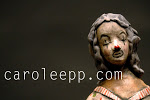call for submissions -Okotoks Art Gallery
The Okotoks Art Gallery is now accepting submissions for consideration for the 2018 exhibition season. The deadline for submission of proposals is April 28th, 2017 at 11:59pm (MST). As per standard art gallery practice, the gallery’s exhibition schedule is programmed a full year in advance. This enables the gallery to fulfill provincial and federal government funding requirements and provide adequate planning time to mount significant exhibitions that are supported through educational programs and public relations.
Selection of exhibits for 2018 will be finalized by July 31st, 2017. A selection committee reviews the submissions and final selection occurs through studio visits and correspondence with artists and curators in whom the gallery has an interest.
Complete submission guidelines can be found here: http://www.okotoks.ca/culture-heritage/art-gallery/exhibit-submissions. Questions can be directed to [email protected] or 403-938-3204.
Location: Okotoks, AB
Phone: 403-938-3204
E-Mail: [email protected]
Website: http://www.okotoks.ca/culture-heritage/art-gallery/exhibit-submissions
job posting: Northern Clay Center
Title: Exhibitions Manager
Reports To: Director
Hours: Full-time, exempt salaried position; work on some evenings and weekends will be required.
Application Deadline: Applications being accepted immediately with interviews to commence beginning mid-March, 2017.
This is a permanent, salaried position, responsible for the
management of Northern Clay Center’s exhibition program. The Exhibitions
Manager reports to the Director and supports other NCC activities as
requested. This position is responsible for planning, organizing, and
installing eight to ten exhibitions each year in two gallery spaces at
NCC. Exhibitions include a range of work by regional and national
artists, one of which travels to an additional 3 – 5 venues around the
state each year. The Exhibitions Manager jointly manages, with the Sales
Gallery Manager, the installation of the American Pottery Festival and the annual Holiday Exhibition.
The Exhibitions Manager also works closely with the Sales Gallery
Manager to ensure NCC’s presence at the annual NCECA conference.
Additionally, this position oversees the work of a part-time program
assistant, whose primary responsibilities include assisting with
installation and de-installation, shipping, and general administration.
Finally, this position is a member of NCC’s senior team, which helps to
support all general operations of the Center, in addition to
exhibition-specific duties.
Major Responsibilities
Plan and curate, with the Director and the Exhibition Committee, the
annual schedule of exhibitions, both on-site and elsewhere as special
opportunities arise. This includes, but is not limited to the following
tasks related to each exhibition:
- Designing, installing, and deconstructing each exhibition
- Packing and unpacking of artwork
- Managing of inventory and registration of incoming artwork
- Maintaining integrity of exhibition galleries (painting, lighting, etc.)
- Managing special display construction
- Production of labels, price lists, other exhibition signage, and didactic material
- Arranging for documentation of each exhibition
- Coordinating catalog production (an average of 3 – 4 catalogues annually)
- Ensuring exhibition wares are photographed and listed for sale on
NCC’s website in a timely fashion following the exhibition opening
Additional administrative duties include:
- Corresponding with artists, dealers and collectors, and other institutions to obtain work
- Sending and maintaining letters of agreement, contracts, loan forms, condition reports, insurance, renewal, filings, and records
- Arranging for transportation of works for exhibitions, including
coordinating storage of shipping crates and materials, preparing
outgoing work for shipping, and packing and unpacking artwork - Ensuring artists receive payment (their commission) for sold exhibition works
- Preparing, with advisement from Director, annual budget for program, and working within constraints of that budget
- Assisting Director in fundraising for the exhibitions program
- Coordinating and preparing for Exhibition Committee meetings, including scheduling and planning, and preparing minutes
- Preparing galleries for exhibition openings, including refreshment
set-up and clean-up with assistance from Sales Gallery and Special
Events Manager, as well as representing the Center at exhibition
openings and exhibition-related workshops and lectures. - Overseeing work of Exhibitions Program Assistant
Work with NCC’s Exhibitions Committee:
- To review and present RFPs for the Emily Galusha Gallery
- To secure a roster of exhibitions that showcases the full spectrum of ceramic art
- To enable the exhibitions program to serve as an educational tool,
introducing the viewer to the range of possibilities within the
medium—from historical pots to contemporary studio ceramics, from
decorative vessels to unfired clay installations, from thematic
multi-person shows to emerging artists
Plan and implement annual tour of McKnight Artists Exhibition (to up to four venues in greater Minnesota):
- Solicit and contract interested venues; communicate schedule and related necessary details
- Collaborate with artists on selection of artworks from exhibition to tour
- Coordinate design and distribution of show card
- Coordinate delivery to and retrieval of artwork from sites; coordinate return shipping of artwork to artists
- Work with Director of Learning and Engagement to design program content in conjunction with traveling exhibition.
Work with Digital and Marketing Manager to ensure appropriate exhibition publicity, including:
- Gathering information (resumes, check lists, artists’ statements, images)
- Writing newsletter text and exhibition postcard copy
- Coordinating exhibition invitation design/print/mailing timeline and execution
- Supplying Digital and Marketing Manager with social media and website content
Assist with the management and implementation of the installation of the American Pottery Festival and Holiday Exhibition, including:
- Assist in provision of storage of work
- Assist in design of exhibition and installation of wares for APF
- Assist with packing and shipping of unsold work after APF (including APF work left after the Holiday Exhibition)
Work with Director of Learning and Engagement to plan and
coordinate artist workshops, residencies, and lectures in conjunction
with exhibitions.
Other tasks as assigned.
SALARY AND BENEFITS AND QUALIFICATIONS
This is a permanent, full-time salaried exempt position. Salary is
commensurate with experience, and qualifications, performance, and NCC
budget. Benefits include vacation and sick time and a benefits
allowance, along with a 403(b).
Applicants should have a strong knowledge of and experience in a
gallery or museum. The ideal applicant should have at least a Bachelor
of Arts or Bachelor of Fine Arts degree; a Masters degree is preferred,
with a focus in ceramics. A minimum of five years of management and
administrative experience is recommended; excellent written, oral
communication, and people skills are a must. Proficiency with
Macintosh-based programs (Microsoft Office) is required; proficiency
with database, online sales, and point of sale software is preferred.
Applicants must have demonstrated ability to work well with artists,
collectors, gallerists, staff and volunteers. Applicants must be able to
lift and move substantial weight for the exhibition installation
portion of this position. Additionally, this position requires a
flexible schedule and strong time management skills.
To apply:
Please send a cover letter describing your interests and experience, a
résumé, and the names, addresses, and telephone numbers of three
professional references to: Sarah Millfelt, Director, at
[email protected].
Northern Clay Center is an equal opportunity employer.
technical tuesday: Myanmar’s Traditions and Culture Myanmar Pottery
monday morning eye candy: Linda Christianson
emerging artist: Seth Charles
respond to the challenge that comes from making utilitarian work that
will become an intimate part of the daily lives of others. My work is
rooted in functional pottery, but I also understand the contemplative
role a pot can play in people’s daily lives, viewing the work in much
same way that one might view a painting or a sculpture. My work is not
highly decorated or ornate, but my forms and surfaces are very
intentional. Driven by traditional pottery forms, my primary concern is
the complex relationships between the form of the pot, the surfaces, and
the firing. I am very interested in the subtle differences that make
two very similar pots very different. I believe in making work that is
well made, but not precise so that no two pieces are ever the same.
My primary inspirations are the Japanese
concepts of wabi and sabi that view imperfection and irregularity as
forms of beauty. Shiho Kanzaki, in the History of Shigiraki Pottery,
defines wabi and sabi as “the fulfillment of sensibility beyond the
incompleteness of material things.” Wabi may be defined with words like:
asymmetry, simplicity, wizened austerity, naturalness, profound subtly,
and unconditional freedom. Sabi may be defined with words like:
restrained refinement and luster.
My work is inspired by the irregular
beauty of the natural world. It is easy to find geological analogies in
my work: rock fissures, lichen, moss, eroding wood, and dry lake beds to
name a few. Much of what happens in nature evolves slowly over time, as
does my making process. My pottery begins as wheel thrown and
hand-built forms that are altered in various ways allowing the natural
development of gesture and asymmetry. While I may have a preconceived
notion of the form, I give myself the freedom to stop and reflect along
the way, often times stopping before creating what I conceived,
discovering the form during the making process. It is this process that
preserves the natural, inherent, plastic quality of the clay without it
being over worked. I embrace the craft skills and procedures every
potter needs to control and manipulate wet clay, while allowing myself
the freedom to keep each piece fresh and different. It is
through an understanding of form, function, and the vocabulary of
pottery that the vessels created can be viewed as abstract sculptural
objects while retaining their function.
attempt to make pots that reward examination and reflection. The wood
firing process adds another dimension to the composition, producing
surfaces that are rich with complexities. This firing method creates a
varied palette of colors and textures not achievable in any other way.
The work is loaded in the kiln either unglazed or with a simple glaze
that is receptive to ash and flame. Similar to geologic actions, heat
and pressure is exerted on the work. During the course of the firings,
the draft created by the chimney pulls wood ash and alkaline vapors
released by the heat of the fire through the kiln. The ash is deposited
on the ware in the path of the flame, and records the thoughts and
process of the maker and the kiln’s fire. I feel that wood fired
pots have the ability to bring us closer to earth and to nature while
creating a direct dialog between the user and the maker. – Seth Charles
new ceramic publication: The Ceramics Reader
“The Ceramics Reader is an impressive collection of essays and
text extracts which covers all the key areas of ceramics – both past and
present. It focuses on thoughts and discussions within ceramics from
the last 20-30 years in particular, but also gives the reader a broad
overview of the last 100 years. One aim of the book is to introduce
contemporary debates, raise awareness and stimulate thought rather than
to present a closed case for examination. Consequently the essays or
extracts present different approaches to give a rounded viewpoint.
Beginning with essential questions such as ‘Why are ceramics important?’
it also considers the field of ceramics from a range of perspectives –
as a cultural activity, ceramics as metaphor, where it sits within arts
and crafts, within gender discussions, ceramics as sculpture, the use of
ceramics as a vehicle for propaganda, ceramics within industry, within
museums, and most recently as part of the ‘expanded field’ as a Fine Art
medium and vehicle for ideas.
The texts come from a wide
variety of sources – books, magazines, journals, papers presented at
conferences and online journals, as well as some newly commissioned
material never before published, to present an international and
comprehensive look at ceramics. The book is divided into three main
sections and each has a short introduction by the editors to place the
chosen texts in context and explain the selections, as well as pointing
to any strong threads or issues within the section and offering a point
of view.
This book is ideal for ceramic students, but will also
appeal to anyone wishing to gain a broad overview and understanding of
the world of ceramics.” via Bloomsbury Website.


















